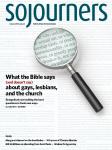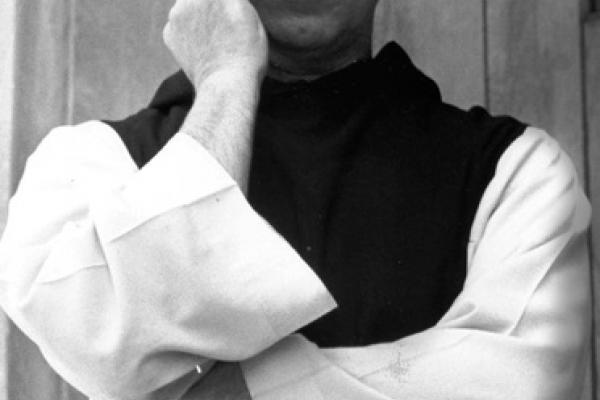WHILE NOT HERE in person for the celebration of his 100 birthday on Jan. 31, Thomas Merton is certainly present in spirit through the extraordinary number of volumes about and even by him being issued to mark the anniversary—a splendid opportunity for readers to acquaint or reacquaint themselves with the monk often considered the most significant American Catholic writer of the past century.
Perhaps the best place to start is Messengers of Hope: Reflections in Honor of Thomas Merton, edited by Gray Henry and Jonathan Montaldo (Fons Vitae), a collection of more than 100 reflections by monks and activists, scholars, filmmakers, and poets, and Christian, Jewish, and Buddhist practitioners on the significance of Merton for their own lives. Some of the contributors are well known—Joan Chittister, John Dear, Jim Forest, James Martin, Richard Rohr, Huston Smith; others are well known in Merton circles; some are younger voices who one day may become well known but already have valuable insights as to how Merton continues to speak to the needs and hopes of the contemporary world. This is a rich compendium of personal stories that is a delight to dip into or to read straight through.
More of Merton’s own writing is being made available in connection with the centenary. In the Valley of Wormwood, edited by Patrick Hart (Cistercian), a collection of 74 biographical sketches of 12th- and 13th-century Cistercians, is Merton’s earliest prose work, and it was recently published for the first time. Definitely a product of Merton’s first monastic years, still marked by the enthusiasm of the “honeymoon” phase of his religious life, this is not “major” Merton, but like virtually everything he wrote, the brief biographies are eminently readable, with revealing details and piquant anecdotes that make the subjects come alive. The work provides evidence of Merton’s immersion in his Cistercian tradition at the very outset of his monastic life, and so is a significant resource for understanding his complex and evolving relationship to his order, but it also serves as a revealing window on many fascinating figures.
Another new Merton work of a far different kind is The Letters of Thomas Merton and Victor and Carolyn Hammer: Ad Majorem Dei Gloriam, edited by F. Douglas Scutchfield and Paul Evans Holbrook (University Press of Kentucky), the complete epistolary record of one of Merton’s closest friendships, with the Viennese-born artist and printer Victor Hammer and his wife, Carolyn. The volume provides valuable details about numerous projects Merton and Victor Hammer worked on together, including the various limited-edition works Hammer produced on his hand press, particularly Merton’s great prose-poem “Hagia Sophia,” inspired by a Hammer painting, as well as the many books supplied to Merton by Carolyn Hammer from the University of Kentucky Library where she worked. But above all it is a record of the deep mutual affection that Merton and the couple shared through their letters and occasional visits.
Still to come in this anniversary year are the collected correspondence of Merton with his principal editor Robert Giroux, edited by Patrick Samway (Notre Dame); Thomas Merton and the Noonday Demon: The Camaldoli Correspondence (Wipf & Stock), editor Donald Grayston’s record of Merton’s recurrent urge to transfer to a more solitary religious order; Early Essays—1947-1952 (Cistercian), a dozen articles, most of them never reprinted, from a key transitional period in his monastic life (a kind of “prequel” to his Selected Essays, recently issued by Orbis in paperback); and Charter, Customs, and Constitutions of the Cistercians (Cistercian), the seventh of a projected 12 volumes of Merton’s monastic conferences (these latter edited by the present reviewer).
For those looking for an overview of Merton’s life and work, a pair of short volumes complement one another. Thomas Merton: Faithful Visionary (Liturgical) by Michael W. Higgins provides a fast-paced, engaging, and at times provocative narrative of Merton’s restless early life and conversion to Catholicism, his decision to join one of the church’s most austere monastic orders, his emergence as a major writer with the 1948 publication of his best-selling autobiography The Seven Storey Mountain, and his subsequent development as an influential proponent of the contemplative dimension of Christian life, of prophetic witness against war, racial injustice, and political oppression, and of the need for dialogue and mutual respect among members of the world’s religious traditions. While aimed at the general reader, the inclusion of numerous excerpts from Higgins’ interviews of Merton friends and scholars over the years, not otherwise available, is an attractive feature of the book that makes it worth reading as well by those already familiar with the details of the Merton story.
While Higgins concentrates on Merton’s life, Linus Mundy in Simply Merton: Wisdom from His Journals (Franciscan) focuses on 15 key themes of Merton’s writing (drawing mainly but not exclusively—despite the subtitle—from the seven volumes of Merton’s journal), such as simplicity, nonviolence, silence and solitude, death, and eternity. Each chapter includes an overview of the theme, brief excerpts on the topic from Merton’s writings, and the author’s own reflections, often drawn from his visits to the Abbey of Gethsemani over the past 30 years and his conversations with the monks about Merton, monasticism, prayer, and practice. The title captures the tone nicely—Merton without a lot of extra frills, accessible to any interested reader, simple without being simplistic.
A more whole-dress treatment of the full range of Merton’s work is provided in Divine Discontent: The Prophetic Voice of Thomas Merton (Bloombury) by John Moses, former dean of London’s St. Paul’s Cathedral. Moses provides a comprehensive survey of what he considers Merton’s multiple “vocations”—sometimes conflicting but ultimately complementary—as monk and writer, contemplative and social critic, ecumenist and prophet. The “discontent” of the title refers to Merton’s endemic restlessness, his ongoing dissatisfactions with himself, his monastery and religious order, his church and his country, that were both evidence of his own limitations, struggles, and flaws and ultimately, in the author’s view, signs of and goads to wholehearted commitment to the reign of God, to love for the Creator and all creation. Merton’s imperfect but deeply committed humanity, his dedication to realizing the true self in his own life and to recognizing and nurturing that true self in others, is the thread that knits together his “vocations” for Moses.
Along with these wide-angle treatments are numerous new studies of particular aspects of Merton’s vision that speak to the present day. Daniel P. Horan’s The Franciscan Heart of Thomas Merton (Ave Maria) examines the early and continuing influence of the Franciscan tradition on Merton’s life and thought. Even after becoming a Cistercian, Merton referred to Francis as his favorite saint and continued to draw on Francis and his followers such as Bonaventure and Duns Scotus for insights from Christology to ecology, from peacemaking to interreligious dialogue, from reflections on the true self to perceptions of the meaning of the Incarnation.
Developing the ideas first expressed in his magisterial study Sophia: The Hidden Christ of Thomas Merton, Christopher Pramuk, in his new book At Play in Creation: Merton’s Awakening to the Feminine Divine (Liturgical), collects essays and presentations given at various conferences and retreats that focus on the centrality of wisdom—the holistic, participatory, experiential encounter with God immanent and transcendent—for Merton’s vision of a redeemed world. The theological richness of Pramuk’s earlier work is distilled here to reveal the pastoral and practical relevance, both challenging and consoling, of Merton’s recognition of the role of divine wisdom in healing the wounds and divisions that beset the contemporary world. (See Pramuk’s “The Public Private Life of Thomas Merton” on page 32.)
In addition to Gordon Oyer’s excellent account of the 1964 Gethsemani peacemakers’ retreat, Pursuing the Spiritual Roots of Protest, reviewed in the December 2014 Sojourners, other recent publications include Robert Inchausti’s cultural commentary Thinking through Thomas Merton: Contemplation for Contemporary Times (SUNY Press), Jeffrey Shaw’s comparative study Illusions of Freedom: Thomas Merton and Jacques Ellul on Technology and the Human Condition (Pickwick), and Suzanne Zuercher’s sensitive reflection on Merton’s brief romantic interlude, The Ground of Love and Truth: Reflections on Thomas Merton’s Relationship with the Woman Known as M. (ACTA).
Still to come during the anniversary year are Ephrem Arcement’s In the School of Prophets: The Formation of Thomas Merton’s Prophetic Spirituality (Liturgical), John Dear’s Thomas Merton, Peacemaker (Orbis), and Make Peace before the Sun Goes Down, Roger Lipsey’s account of Merton’s relationship with his abbot (Shambhala)—certainly a feast of words rich and nourishing enough to last an entire year of celebration and reflection.

Got something to say about what you're reading? We value your feedback!
